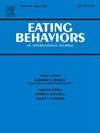Beyond the screen: The relationships between online activities and eating disorder risk
IF 2.4
3区 医学
Q2 PSYCHIATRY
引用次数: 0
Abstract
This study explores the associations between online activities and eating disorder (ED) risk. Seven types of online activities were investigated: the usage of calorie counting and fitness apps, dating apps, social networking sites (SNS), engagement in online games, exposure to pro-ED content, cyberbullying victimization, and mukbang. A sample of 404 participants (257 females, 147 males) aged 18–48 were recruited via a Chinese online survey platform. Latent profile analysis (LPA) identified patterns of online activity, and multiple linear regression assessed the relationship between these activities and ED risk. The results showed that three distinct online activity profiles emerged: Low Risk Group, Moderate Risk Group, and High Risk Group, comprising 63.12 %, 29.70 %, and 7.18 % of the sample, respectively. The Low Risk Group exhibited the lowest ED risk and significantly lower engagement in all ED-related online activities except for social media use, compared to the other groups. The Moderate Risk Group showed a moderate level of ED risk; it did not differ significantly from the High Risk Group in most online activities, but it had higher social media use and lower rates of cyberbullying victimization. Regression analysis indicated that social media use, pro-ED content exposure, and cyberbullying victimization were significantly associated with ED risk, accounting for 43.9 % of the variance. These findings indicate that different patterns of online activity are associated with varying ED risks, and the combination of social media use and cyberbullying victimization, rather than each factor alone, appears to be correlated with higher ED risk.
屏幕之外:网络活动与饮食失调风险之间的关系
这项研究探讨了网络活动与饮食失调(ED)风险之间的关系。调查了七种类型的在线活动:使用卡路里计算和健身应用程序、约会应用程序、社交网站(SNS)、参与在线游戏、接触亲ed内容、网络欺凌受害和mukbang。通过中国在线调查平台招募了404名参与者(257名女性,147名男性),年龄在18-48岁之间。潜在剖面分析(LPA)确定了在线活动模式,多元线性回归评估了这些活动与ED风险之间的关系。结果显示,出现了三种不同的在线活动概况:低风险组,中等风险组和高风险组,分别占样本的63.12%,29.70%和7.18%。与其他组相比,低风险组表现出最低的ED风险,除社交媒体使用外,所有与ED相关的在线活动的参与度都明显较低。中度风险组ED风险中等;在大多数网络活动中,这一群体与高风险群体没有显著差异,但他们使用社交媒体的频率更高,遭受网络欺凌的比例更低。回归分析显示,社交媒体使用、亲ED内容曝光和网络欺凌受害与ED风险显著相关,占方差的43.9%。这些发现表明,不同的在线活动模式与不同的ED风险相关,社交媒体使用和网络欺凌受害的结合,而不是单独的因素,似乎与更高的ED风险相关。
本文章由计算机程序翻译,如有差异,请以英文原文为准。
求助全文
约1分钟内获得全文
求助全文
来源期刊

Eating behaviors
Multiple-
CiteScore
4.20
自引率
3.60%
发文量
65
审稿时长
60 days
期刊介绍:
Eating Behaviors is an international peer-reviewed scientific journal publishing human research on the etiology, prevention, and treatment of obesity, binge eating, and eating disorders in adults and children. Studies related to the promotion of healthy eating patterns to treat or prevent medical conditions (e.g., hypertension, diabetes mellitus, cancer) are also acceptable. Two types of manuscripts are encouraged: (1) Descriptive studies establishing functional relationships between eating behaviors and social, cognitive, environmental, attitudinal, emotional or biochemical factors; (2) Clinical outcome research evaluating the efficacy of prevention or treatment protocols.
 求助内容:
求助内容: 应助结果提醒方式:
应助结果提醒方式:


